Abstract
We report the identification of 10 new human homeobox sequences. Altogether, we have isolated and sequenced 30 human homeoboxes clustered in 4 chromosomal regions called HOX loci. HOX1 includes 8 homeoboxes in 90 kb of DNA on chromosome 7. HOX2 includes 9 homeoboxes in 180 kb on chromosome 17. HOX3 contains at least 7 homeoboxes in 160 kb on chromosome 12. Finally, HOX4 includes 6 homeoboxes in 70 kb on chromosome 2. Homeodomains obtained from the conceptual translation of the isolated homeoboxes can be attributed to 13 homology groups on the basis of their primary peptide sequence. Moreover, it is possible to align the 4 HOX loci so that corresponding homeodomains in all loci share the maximal sequence identity. The complex of these observations supports and extends an evolutionary hypothesis concerning the origin of mammalian and fly homeobox gene complexes. We also determined the coding region present in 3 HOX2 cDNA clones corresponding to HOX2G, HOX2H and HOX2I.
Full text
PDF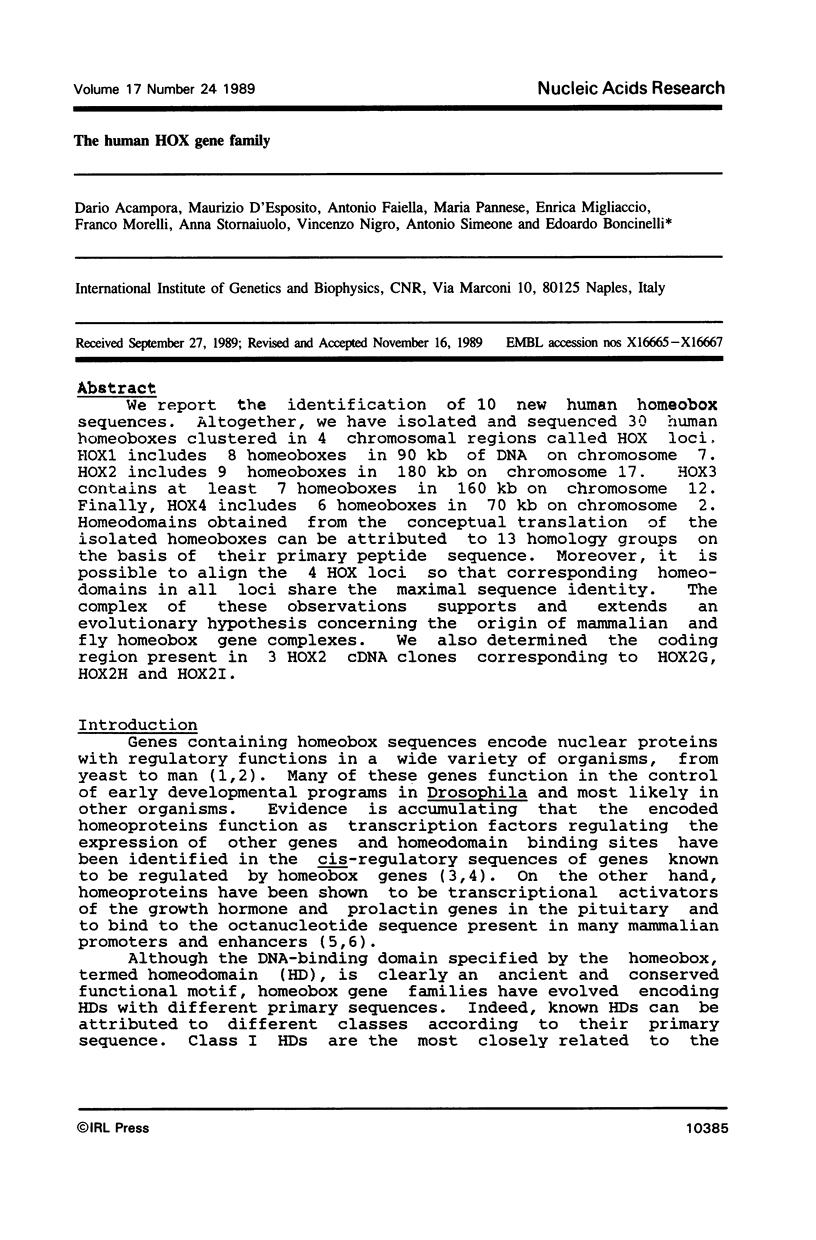
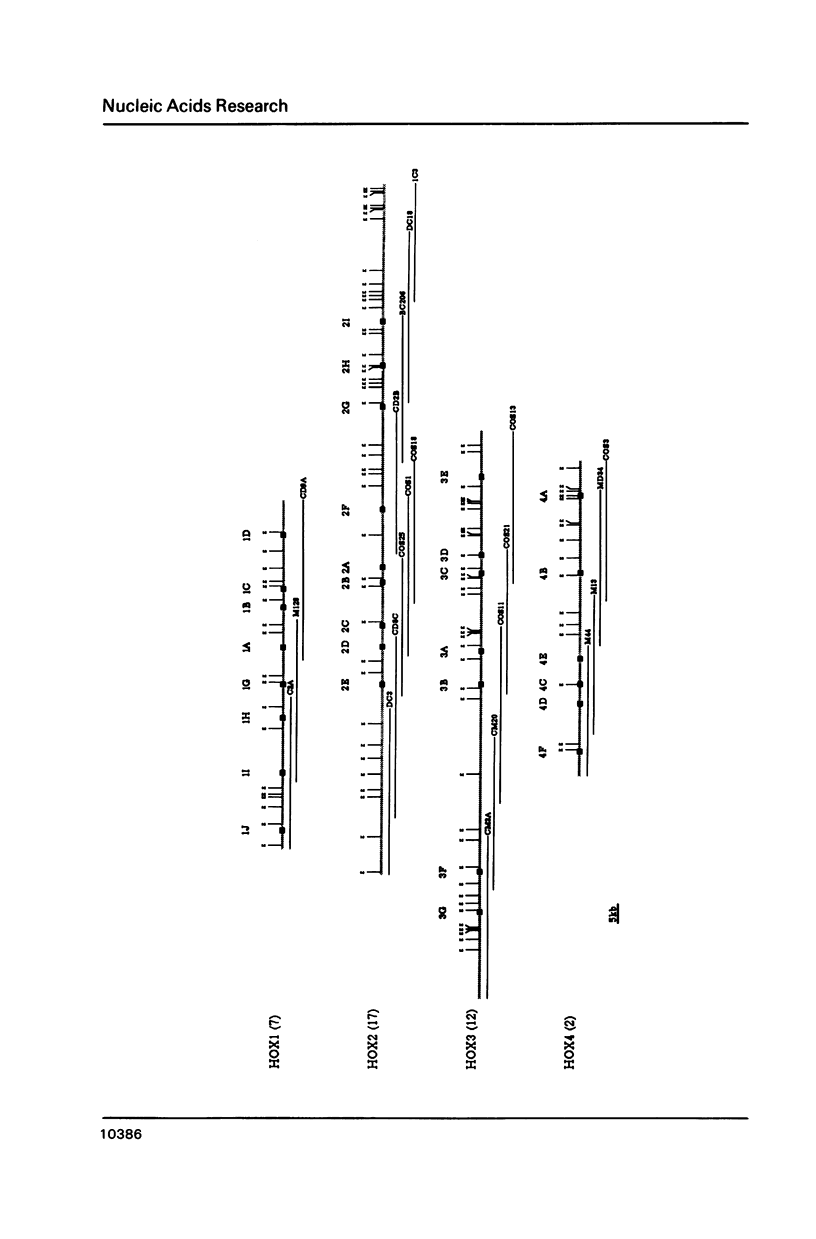
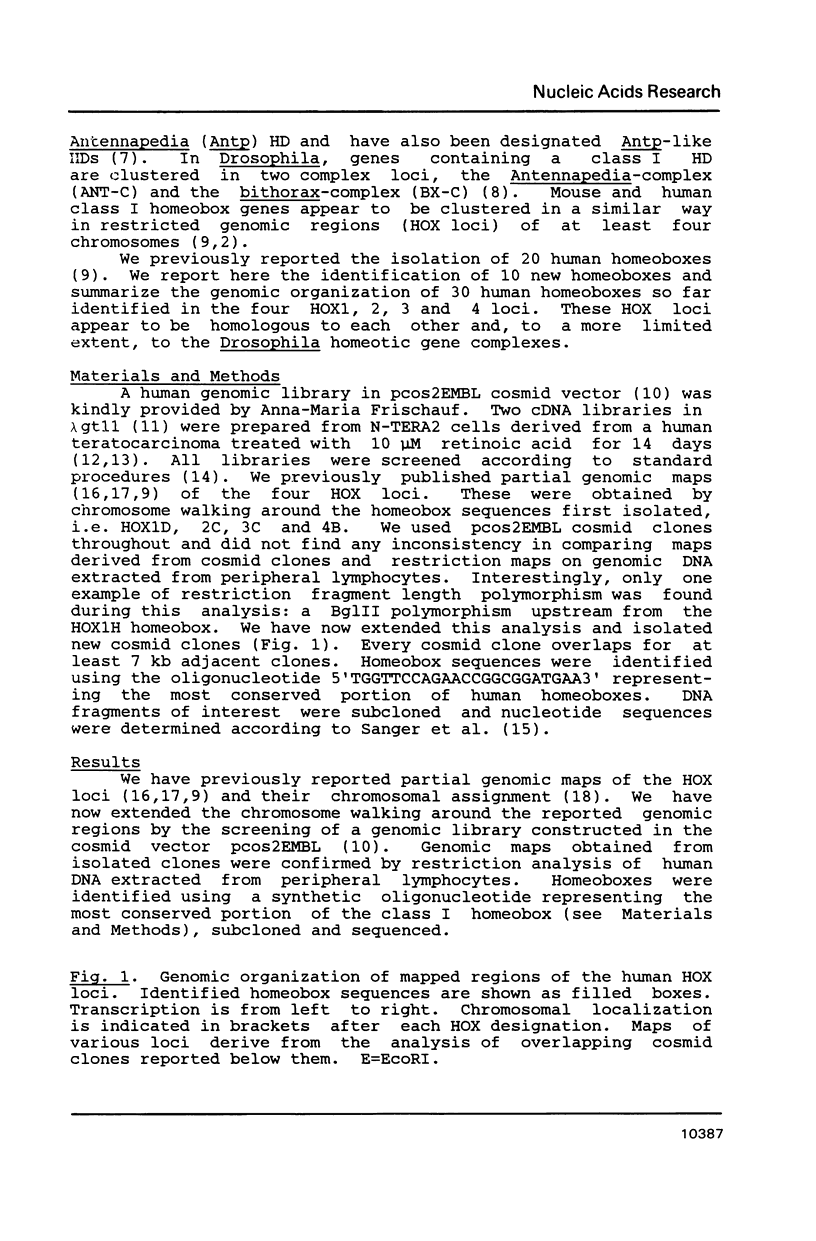
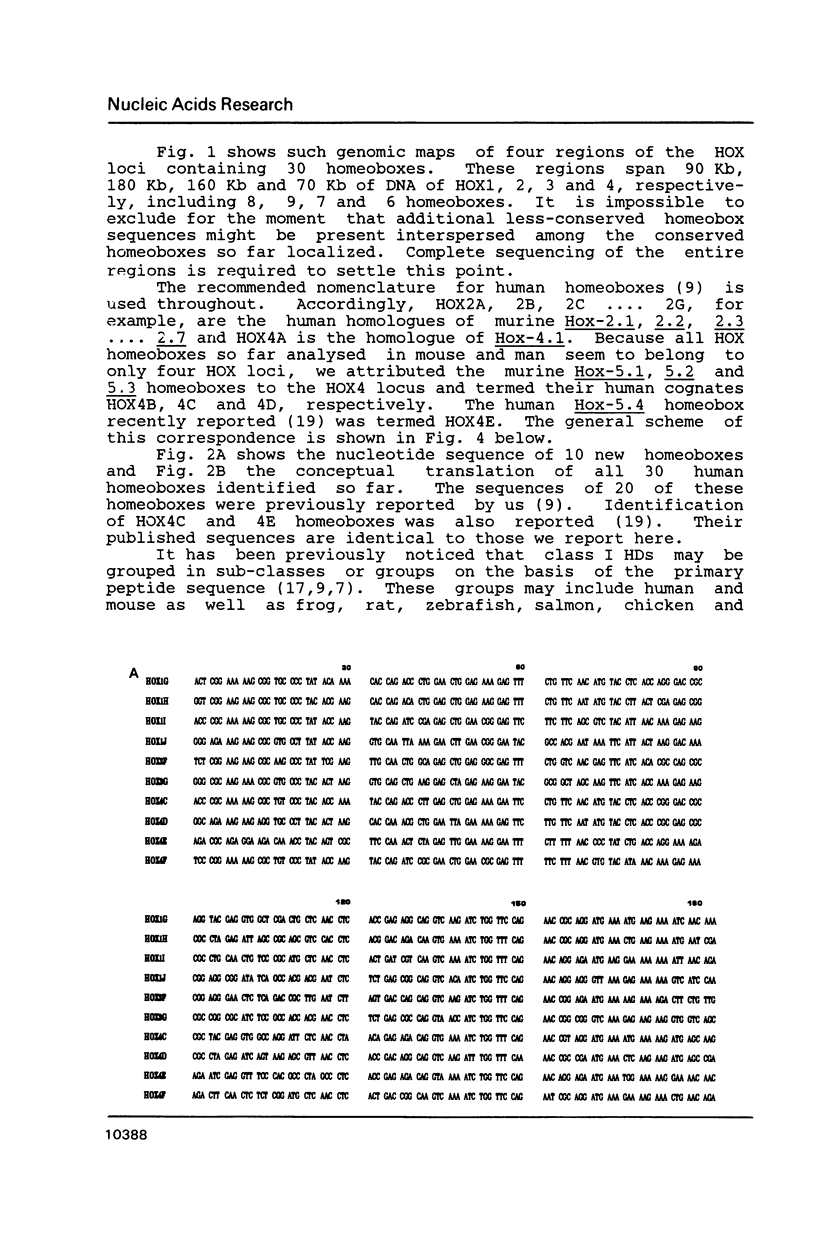
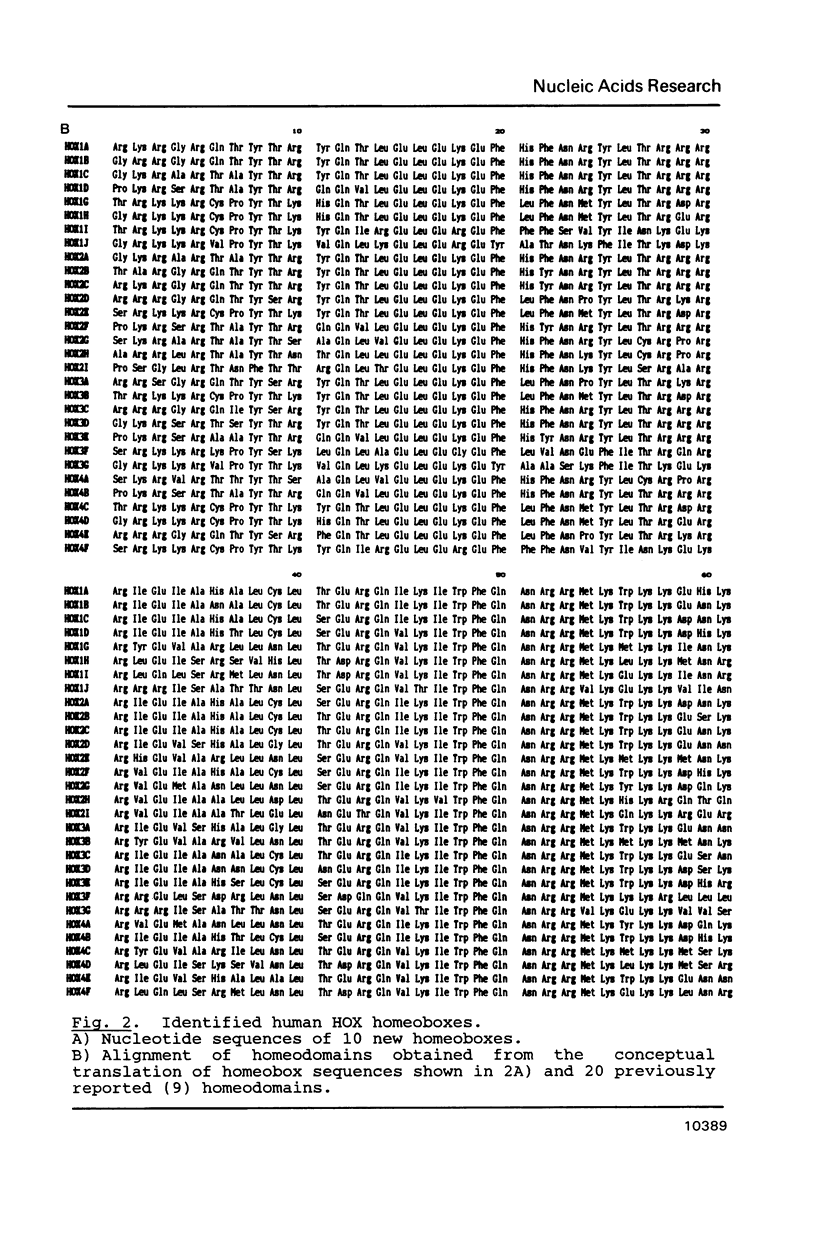
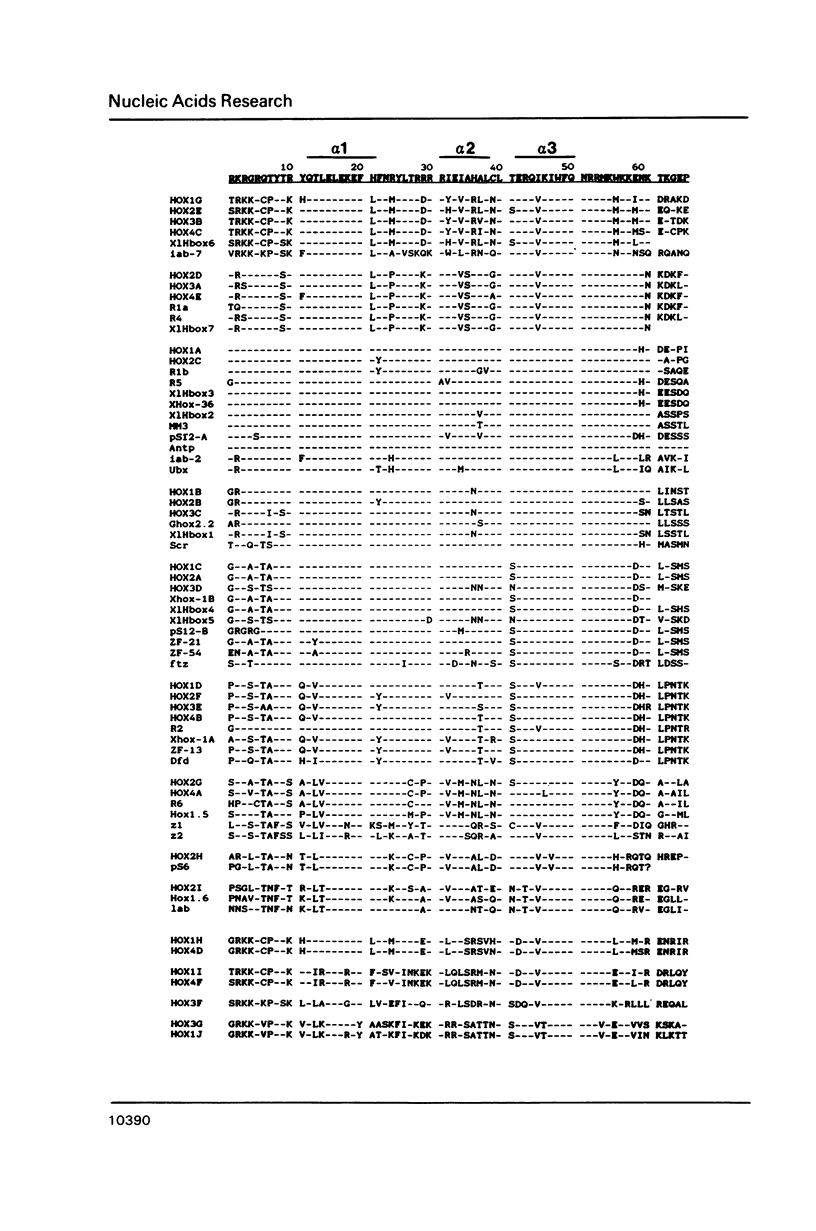
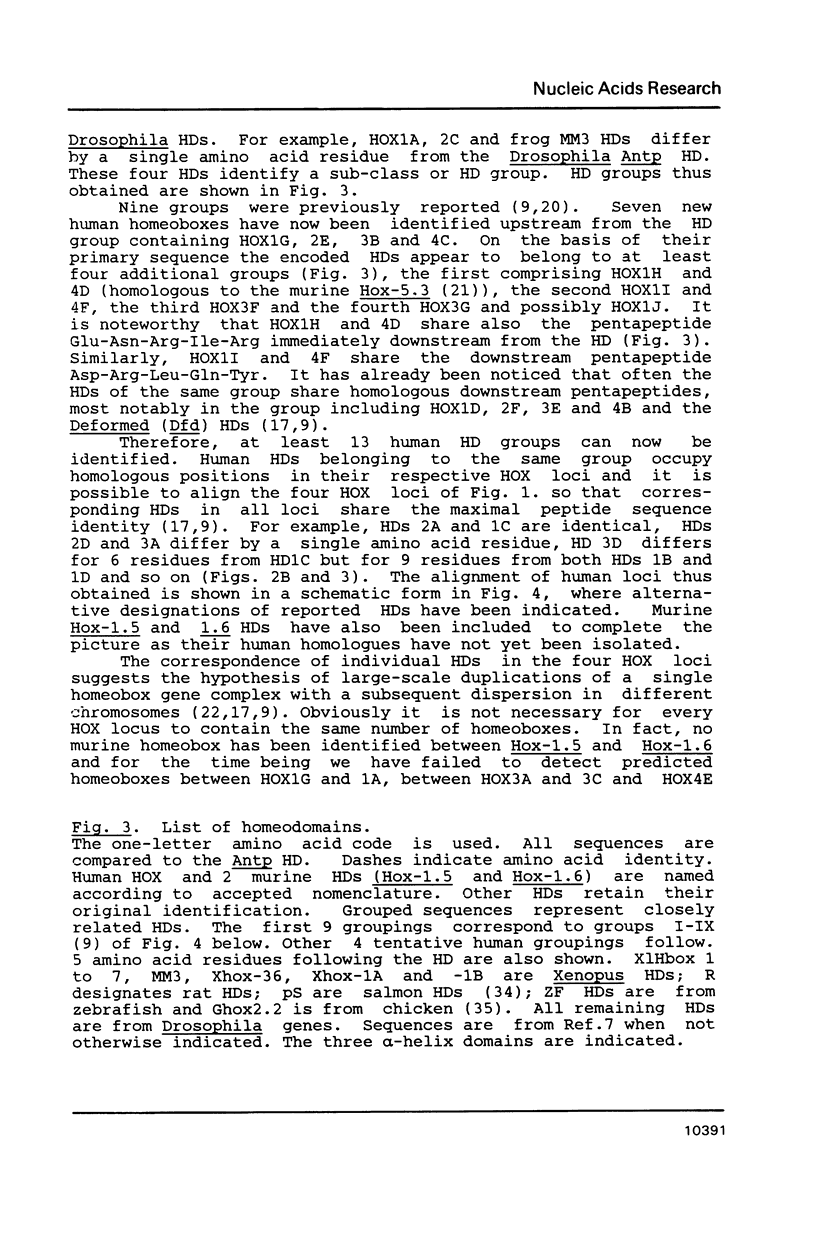
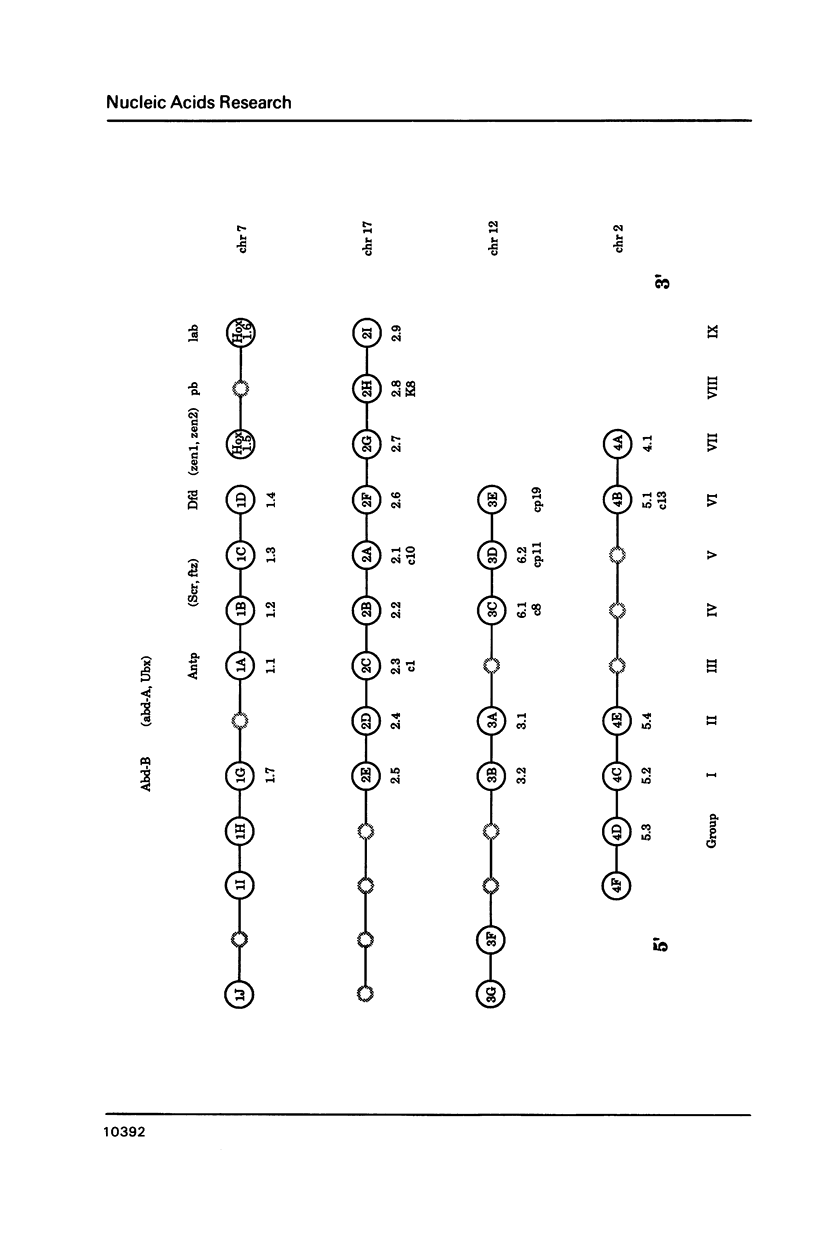
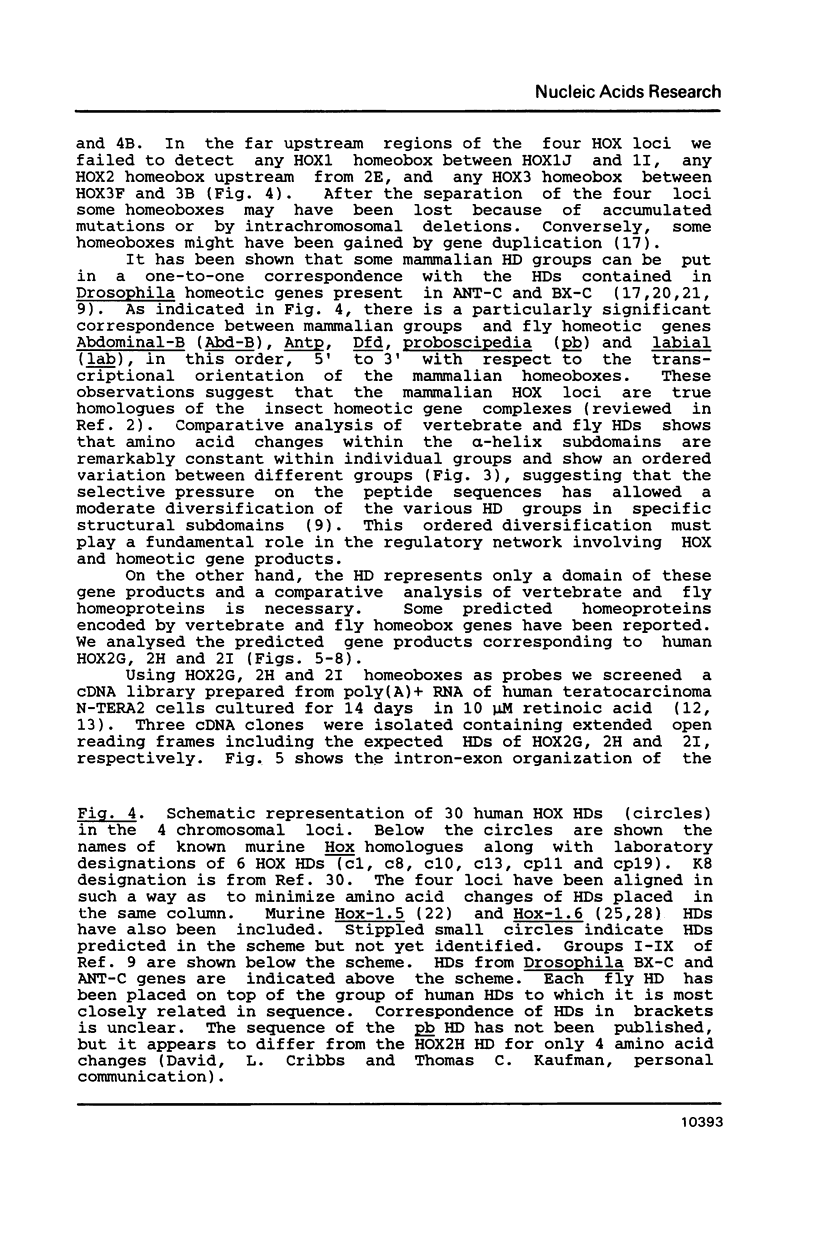
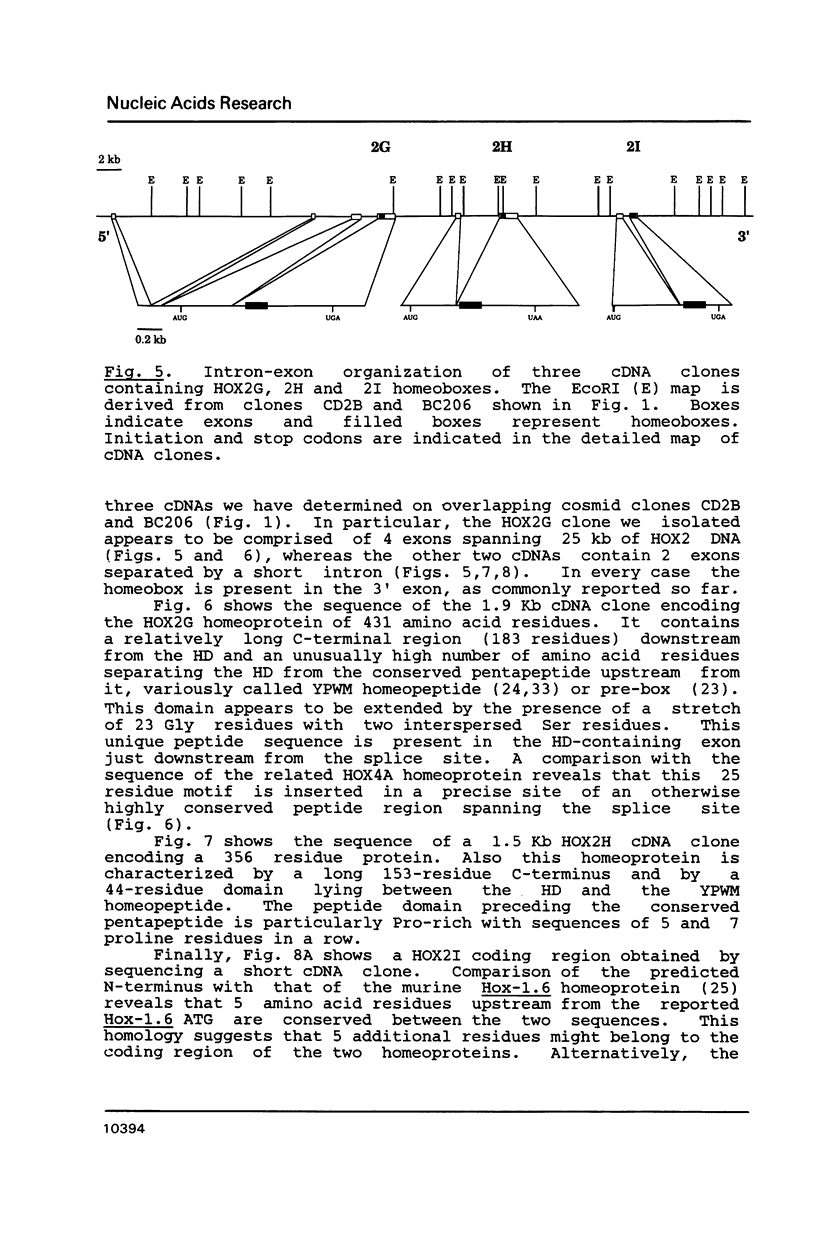
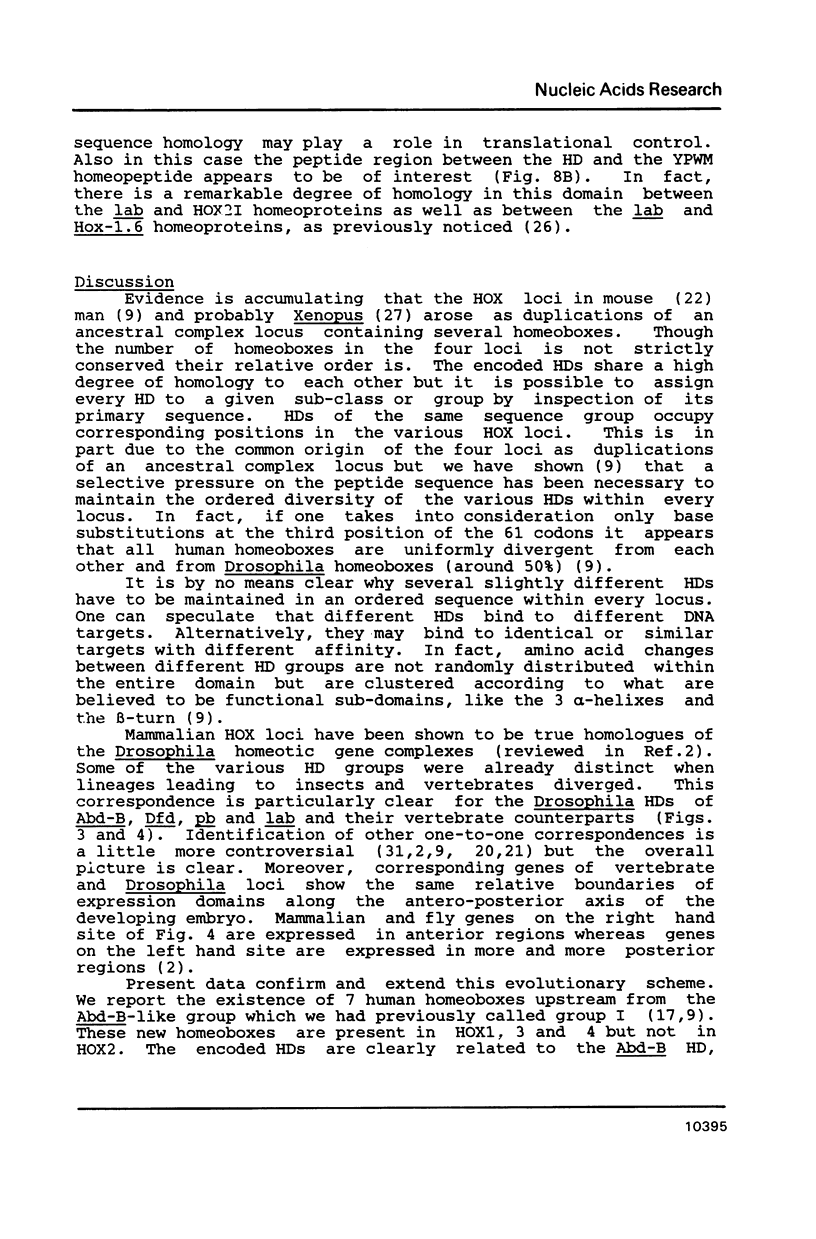
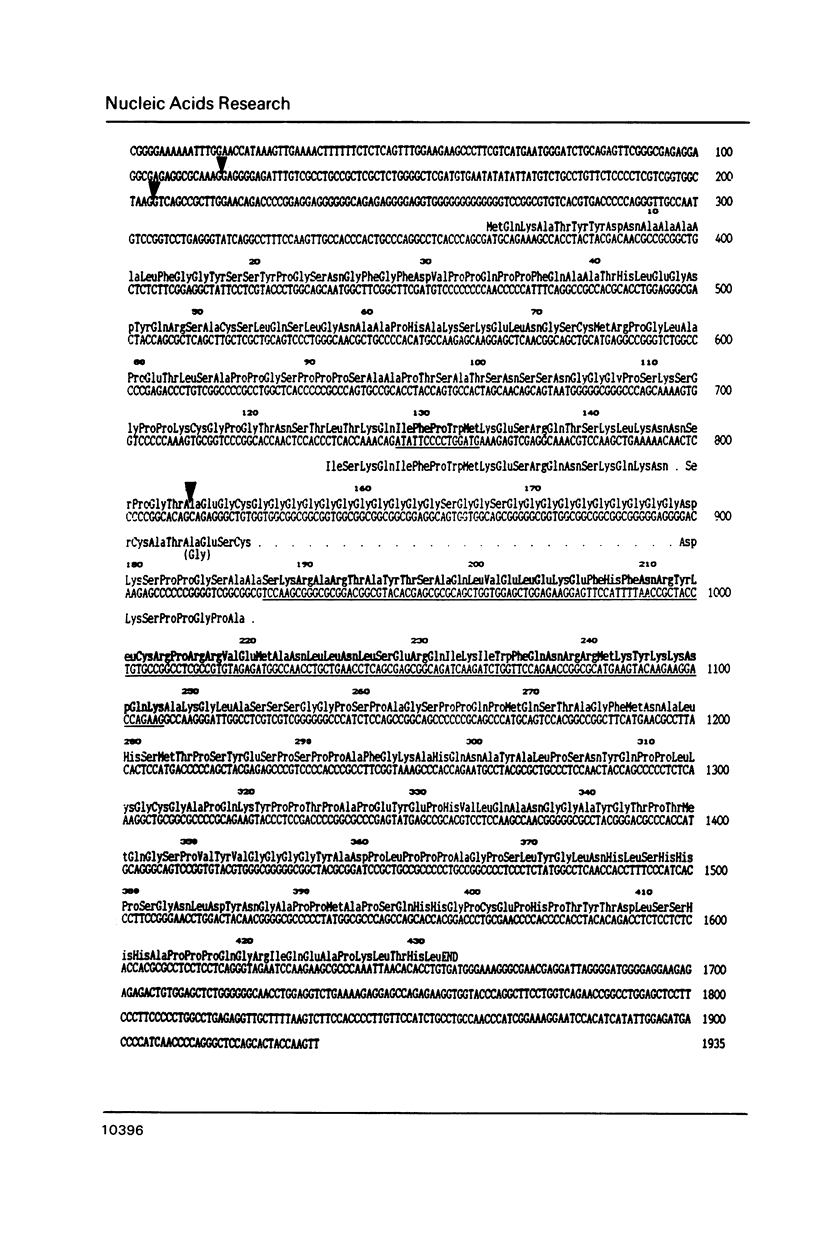
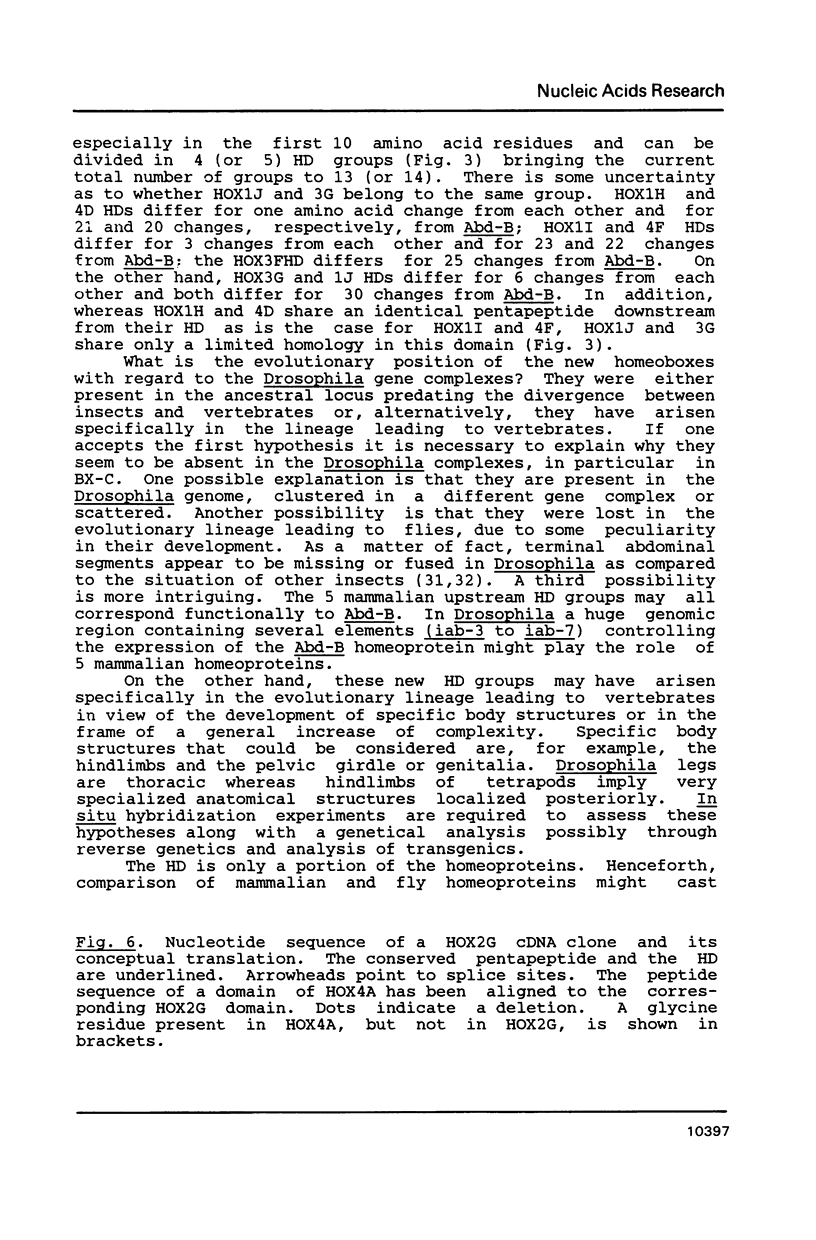
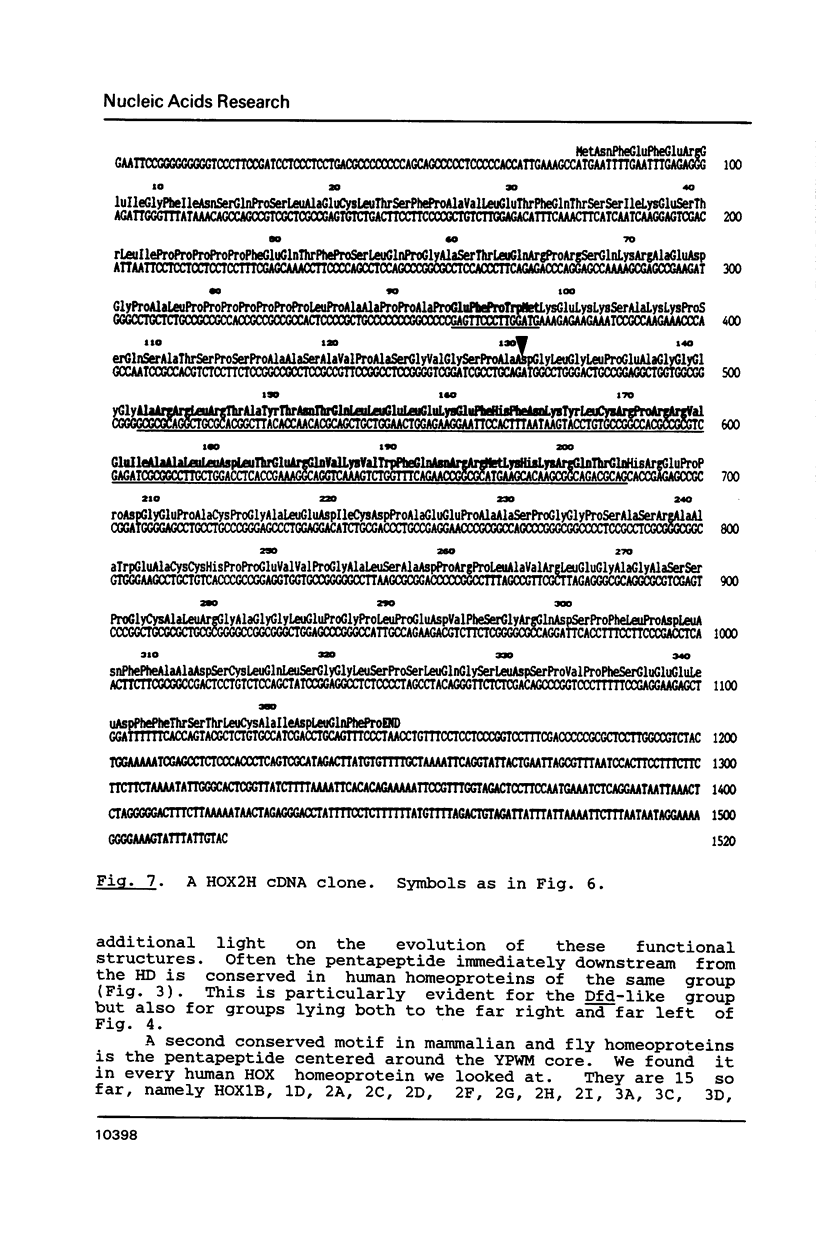
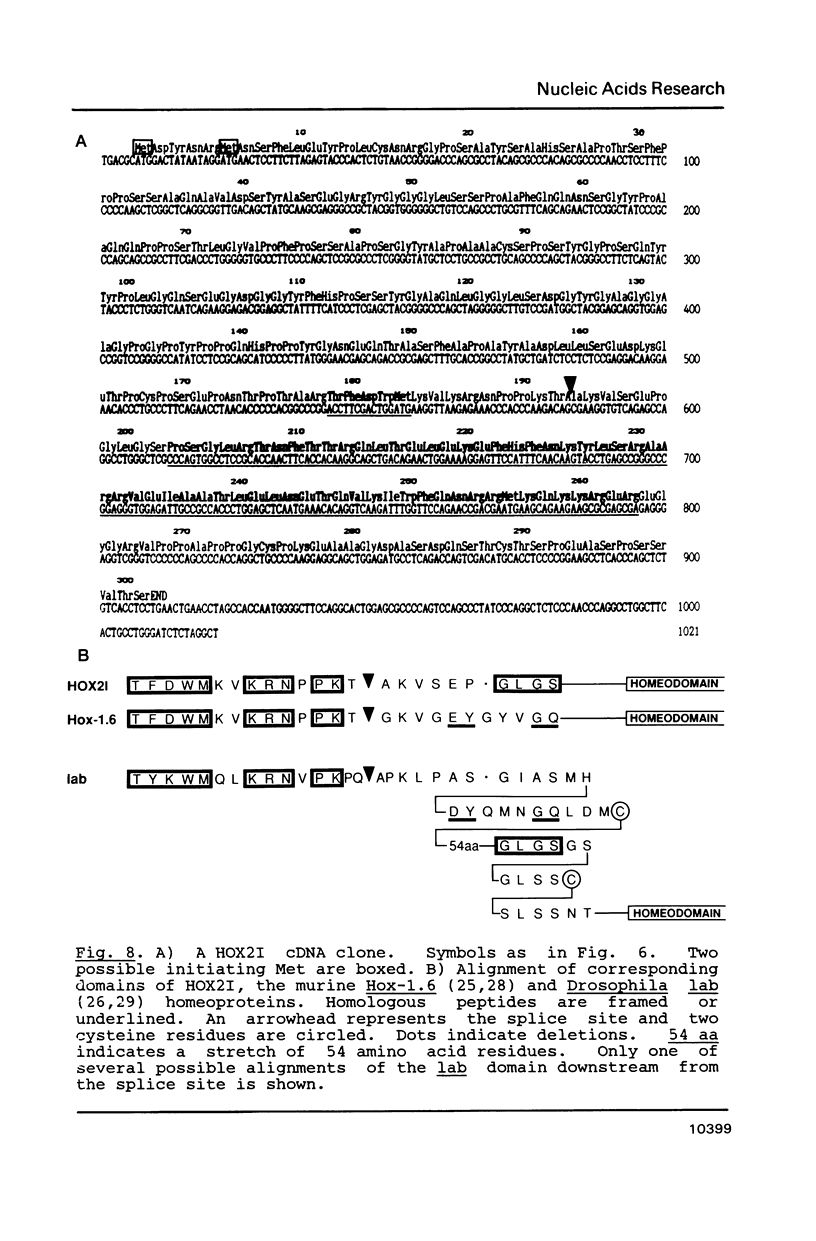
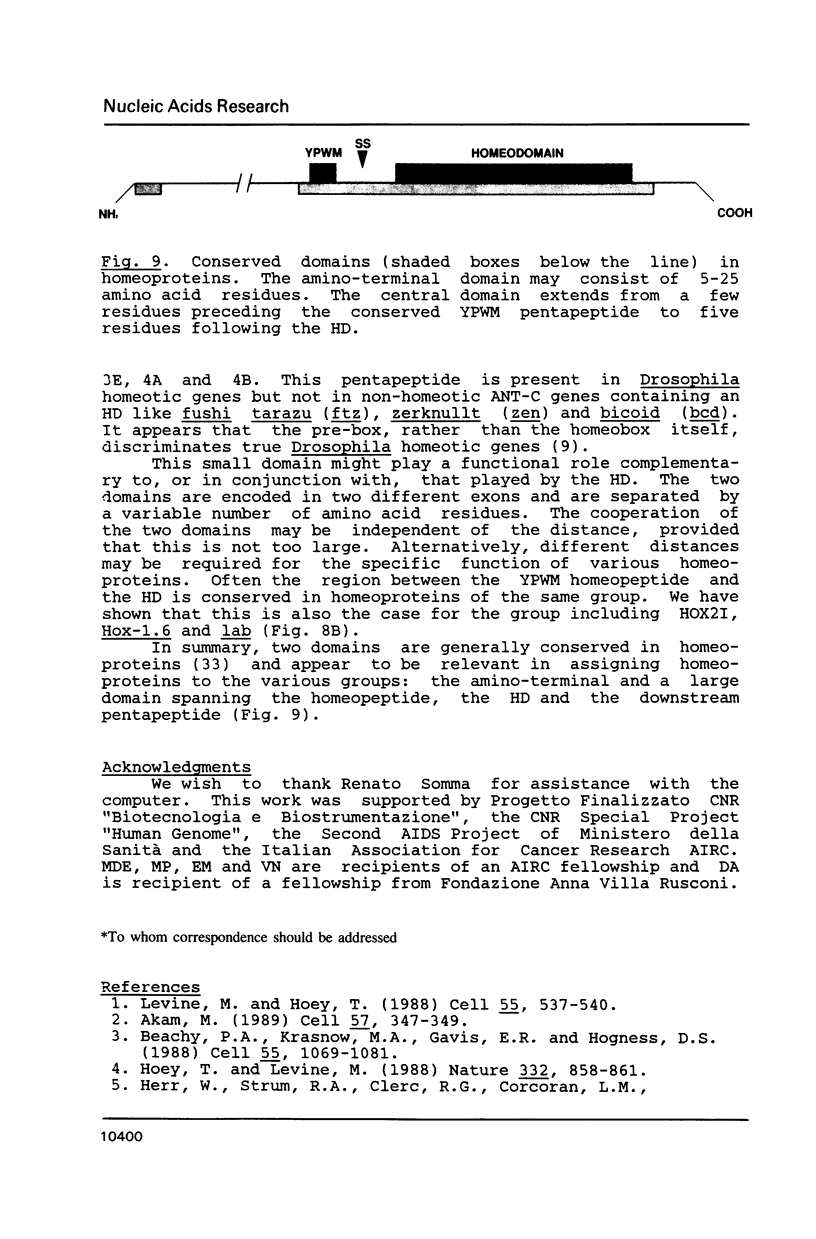
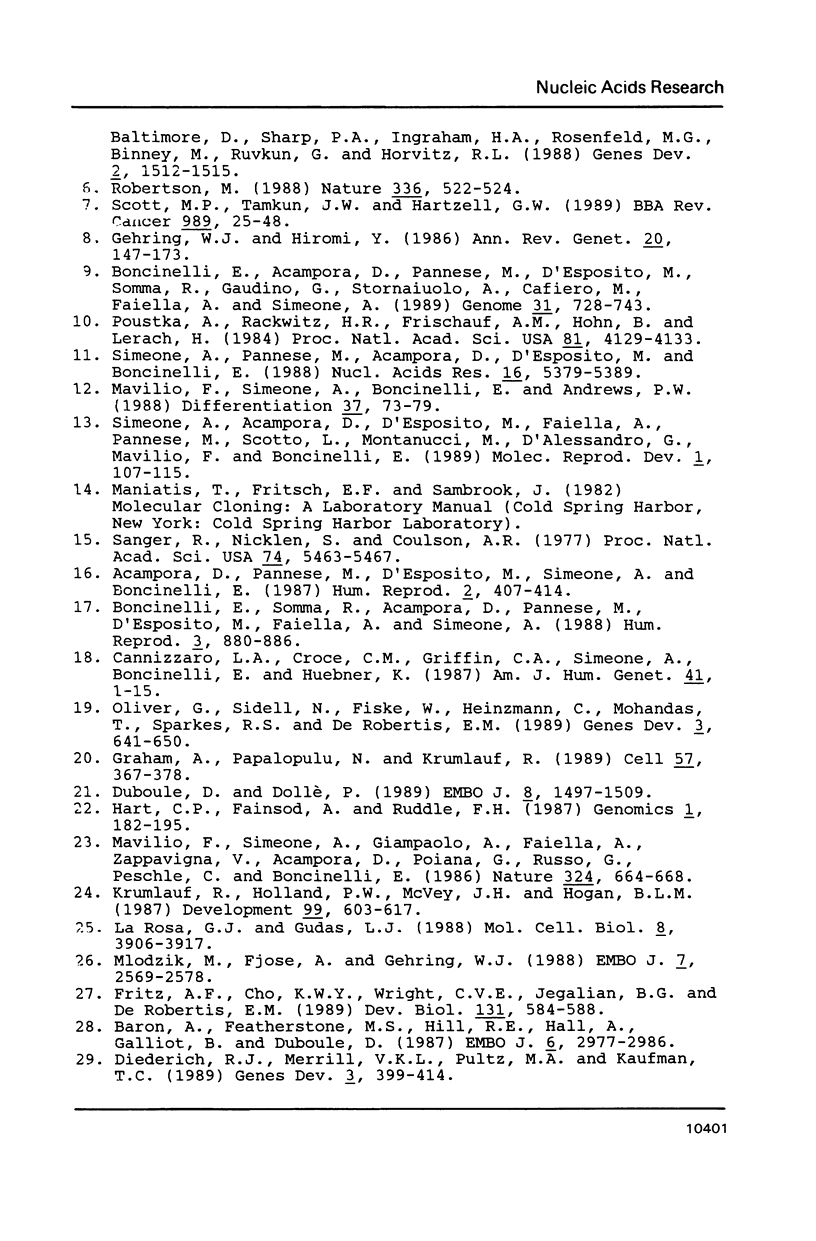
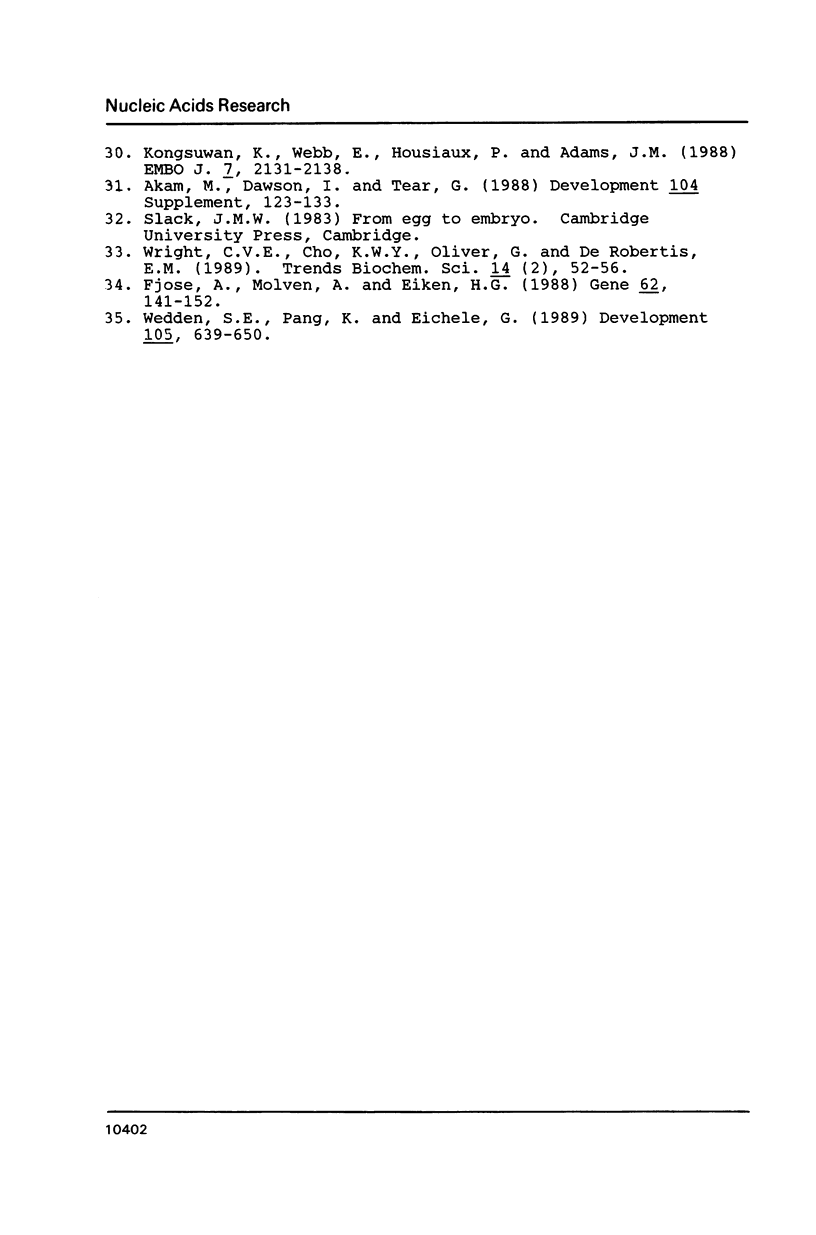
Selected References
These references are in PubMed. This may not be the complete list of references from this article.
- Acampora D., Pannese M., D'Esposito M., Simeone A., Boncinelli E. Human homoeobox-containing genes in development. Hum Reprod. 1987 Jul;2(5):407–414. doi: 10.1093/oxfordjournals.humrep.a136559. [DOI] [PubMed] [Google Scholar]
- Akam M. Hox and HOM: homologous gene clusters in insects and vertebrates. Cell. 1989 May 5;57(3):347–349. doi: 10.1016/0092-8674(89)90909-4. [DOI] [PubMed] [Google Scholar]
- Baron A., Featherstone M. S., Hill R. E., Hall A., Galliot B., Duboule D. Hox-1.6: a mouse homeo-box-containing gene member of the Hox-1 complex. EMBO J. 1987 Oct;6(10):2977–2986. doi: 10.1002/j.1460-2075.1987.tb02603.x. [DOI] [PMC free article] [PubMed] [Google Scholar]
- Beachy P. A., Krasnow M. A., Gavis E. R., Hogness D. S. An Ultrabithorax protein binds sequences near its own and the Antennapedia P1 promoters. Cell. 1988 Dec 23;55(6):1069–1081. doi: 10.1016/0092-8674(88)90251-6. [DOI] [PubMed] [Google Scholar]
- Boncinelli E., Somma R., Acampora D., Pannese M., D'Esposito M., Faiella A., Simeone A. Organization of human homeobox genes. Hum Reprod. 1988 Oct;3(7):880–886. doi: 10.1093/oxfordjournals.humrep.a136802. [DOI] [PubMed] [Google Scholar]
- Cannizzaro L. A., Croce C. M., Griffin C. A., Simeone A., Boncinelli E., Huebner K. Human homeo box-containing genes located at chromosome regions 2q31----2q37 and 12q12----12q13. Am J Hum Genet. 1987 Jul;41(1):1–15. [PMC free article] [PubMed] [Google Scholar]
- Diederich R. J., Merrill V. K., Pultz M. A., Kaufman T. C. Isolation, structure, and expression of labial, a homeotic gene of the Antennapedia Complex involved in Drosophila head development. Genes Dev. 1989 Mar;3(3):399–414. doi: 10.1101/gad.3.3.399. [DOI] [PubMed] [Google Scholar]
- Duboule D., Dollé P. The structural and functional organization of the murine HOX gene family resembles that of Drosophila homeotic genes. EMBO J. 1989 May;8(5):1497–1505. doi: 10.1002/j.1460-2075.1989.tb03534.x. [DOI] [PMC free article] [PubMed] [Google Scholar]
- Fjose A., Molven A., Eiken H. G. Molecular cloning and characterization of homeo-box-containing genes from Atlantic salmon. Gene. 1988;62(1):141–152. doi: 10.1016/0378-1119(88)90588-4. [DOI] [PubMed] [Google Scholar]
- Fritz A. F., Cho K. W., Wright C. V., Jegalian B. G., De Robertis E. M. Duplicated homeobox genes in Xenopus. Dev Biol. 1989 Feb;131(2):584–588. doi: 10.1016/s0012-1606(89)80029-6. [DOI] [PubMed] [Google Scholar]
- Gehring W. J., Hiromi Y. Homeotic genes and the homeobox. Annu Rev Genet. 1986;20:147–173. doi: 10.1146/annurev.ge.20.120186.001051. [DOI] [PubMed] [Google Scholar]
- Graham A., Papalopulu N., Krumlauf R. The murine and Drosophila homeobox gene complexes have common features of organization and expression. Cell. 1989 May 5;57(3):367–378. doi: 10.1016/0092-8674(89)90912-4. [DOI] [PubMed] [Google Scholar]
- Hart C. P., Fainsod A., Ruddle F. H. Sequence analysis of the murine Hox-2.2, -2.3, and -2.4 homeo boxes: evolutionary and structural comparisons. Genomics. 1987 Oct;1(2):182–195. doi: 10.1016/0888-7543(87)90011-5. [DOI] [PubMed] [Google Scholar]
- Hoey T., Levine M. Divergent homeo box proteins recognize similar DNA sequences in Drosophila. Nature. 1988 Apr 28;332(6167):858–861. doi: 10.1038/332858a0. [DOI] [PubMed] [Google Scholar]
- Kongsuwan K., Webb E., Housiaux P., Adams J. M. Expression of multiple homeobox genes within diverse mammalian haemopoietic lineages. EMBO J. 1988 Jul;7(7):2131–2138. doi: 10.1002/j.1460-2075.1988.tb03052.x. [DOI] [PMC free article] [PubMed] [Google Scholar]
- Krumlauf R., Holland P. W., McVey J. H., Hogan B. L. Developmental and spatial patterns of expression of the mouse homeobox gene, Hox 2.1. Development. 1987 Apr;99(4):603–617. doi: 10.1242/dev.99.4.603. [DOI] [PubMed] [Google Scholar]
- LaRosa G. J., Gudas L. J. Early retinoic acid-induced F9 teratocarcinoma stem cell gene ERA-1: alternate splicing creates transcripts for a homeobox-containing protein and one lacking the homeobox. Mol Cell Biol. 1988 Sep;8(9):3906–3917. doi: 10.1128/mcb.8.9.3906. [DOI] [PMC free article] [PubMed] [Google Scholar]
- Levine M., Hoey T. Homeobox proteins as sequence-specific transcription factors. Cell. 1988 Nov 18;55(4):537–540. doi: 10.1016/0092-8674(88)90209-7. [DOI] [PubMed] [Google Scholar]
- Mavilio F., Simeone A., Boncinelli E., Andrews P. W. Activation of four homeobox gene clusters in human embryonal carcinoma cells induced to differentiate by retinoic acid. Differentiation. 1988;37(1):73–79. doi: 10.1111/j.1432-0436.1988.tb00798.x. [DOI] [PubMed] [Google Scholar]
- Mavilio F., Simeone A., Giampaolo A., Faiella A., Zappavigna V., Acampora D., Poiana G., Russo G., Peschle C., Boncinelli E. Differential and stage-related expression in embryonic tissues of a new human homoeobox gene. Nature. 1986 Dec 18;324(6098):664–668. doi: 10.1038/324664a0. [DOI] [PubMed] [Google Scholar]
- Mlodzik M., Fjose A., Gehring W. J. Molecular structure and spatial expression of a homeobox gene from the labial region of the Antennapedia-complex. EMBO J. 1988 Aug;7(8):2569–2578. doi: 10.1002/j.1460-2075.1988.tb03106.x. [DOI] [PMC free article] [PubMed] [Google Scholar]
- Oliver G., Sidell N., Fiske W., Heinzmann C., Mohandas T., Sparkes R. S., De Robertis E. M. Complementary homeo protein gradients in developing limb buds. Genes Dev. 1989 May;3(5):641–650. doi: 10.1101/gad.3.5.641. [DOI] [PubMed] [Google Scholar]
- Poustka A., Rackwitz H. R., Frischauf A. M., Hohn B., Lehrach H. Selective isolation of cosmid clones by homologous recombination in Escherichia coli. Proc Natl Acad Sci U S A. 1984 Jul;81(13):4129–4133. doi: 10.1073/pnas.81.13.4129. [DOI] [PMC free article] [PubMed] [Google Scholar]
- Robertson M. Homoeo boxes, POU proteins and the limits to promiscuity. Nature. 1988 Dec 8;336(6199):522–524. doi: 10.1038/336522a0. [DOI] [PubMed] [Google Scholar]
- Sanger F., Nicklen S., Coulson A. R. DNA sequencing with chain-terminating inhibitors. Proc Natl Acad Sci U S A. 1977 Dec;74(12):5463–5467. doi: 10.1073/pnas.74.12.5463. [DOI] [PMC free article] [PubMed] [Google Scholar]
- Scott M. P., Tamkun J. W., Hartzell G. W., 3rd The structure and function of the homeodomain. Biochim Biophys Acta. 1989 Jul 28;989(1):25–48. doi: 10.1016/0304-419x(89)90033-4. [DOI] [PubMed] [Google Scholar]
- Simeone A., Acampora D., D'Esposito M., Faiella A., Pannese M., Scotto L., Montanucci M., D'Alessandro G., Mavilio F., Boncinelli E. Posttranscriptional control of human homeobox gene expression in induced NTERA-2 embryonal carcinoma cells. Mol Reprod Dev. 1989;1(2):107–115. doi: 10.1002/mrd.1080010205. [DOI] [PubMed] [Google Scholar]
- Simeone A., Pannese M., Acampora D., D'Esposito M., Boncinelli E. At least three human homeoboxes on chromosome 12 belong to the same transcription unit. Nucleic Acids Res. 1988 Jun 24;16(12):5379–5390. doi: 10.1093/nar/16.12.5379. [DOI] [PMC free article] [PubMed] [Google Scholar]
- Wedden S. E., Pang K., Eichele G. Expression pattern of homeobox-containing genes during chick embryogenesis. Development. 1989 Mar;105(3):639–650. doi: 10.1242/dev.105.3.639. [DOI] [PubMed] [Google Scholar]
- Wright C. V., Cho K. W., Oliver G., De Robertis E. M. Vertebrate homeodomain proteins: families of region-specific transcription factors. Trends Biochem Sci. 1989 Feb;14(2):52–56. doi: 10.1016/0968-0004(89)90043-1. [DOI] [PubMed] [Google Scholar]


